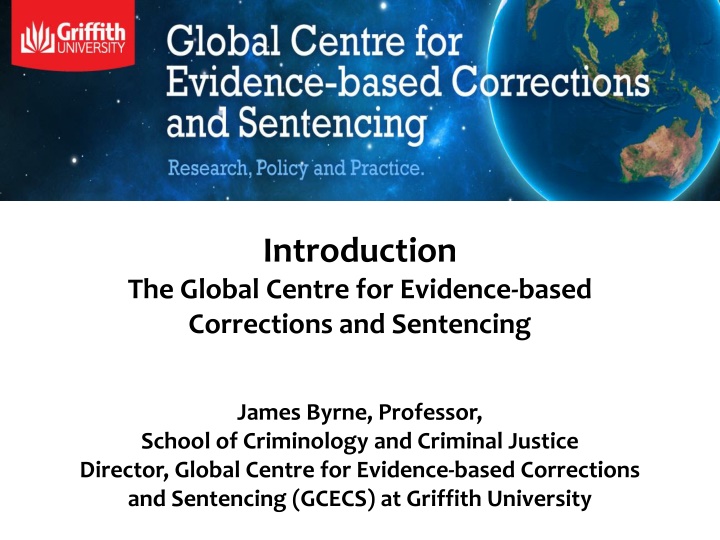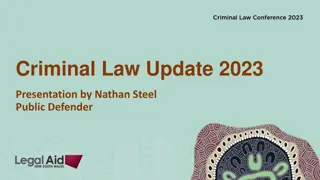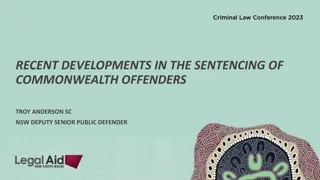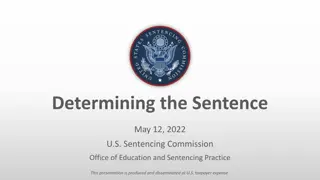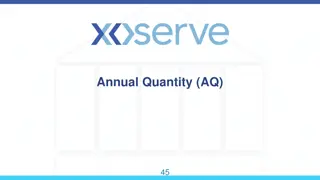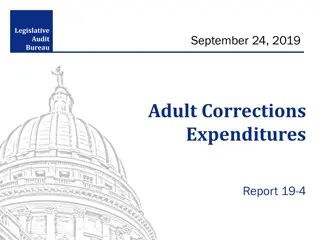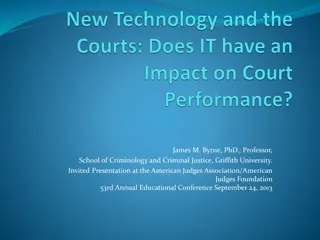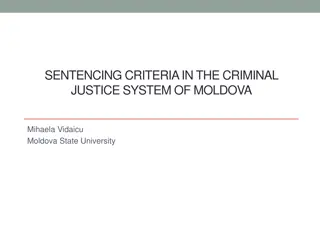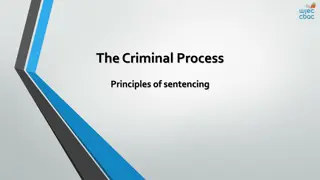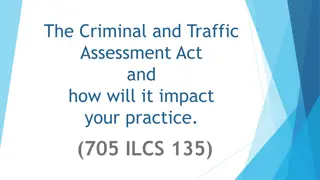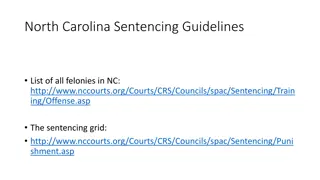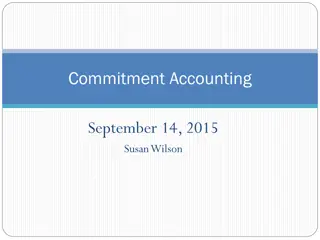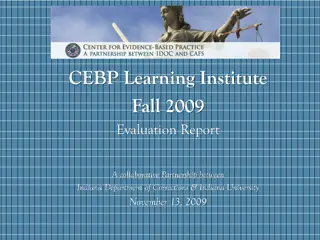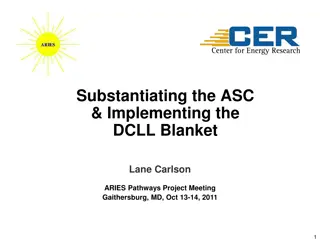Global Centre for Evidence-based Corrections and Sentencing
Griffith University's Global Centre for Evidence-based Corrections and Sentencing (GCECS) led by Professor James Byrne focuses on high-quality research, knowledge exchange seminars, and network development in the field of corrections and sentencing. The Centre adopts an expanded definition of evidence and emphasizes the community context of desistance, aiming to redefine the target for change by focusing on both individual offender transformation and targeted community improvement.
Download Presentation

Please find below an Image/Link to download the presentation.
The content on the website is provided AS IS for your information and personal use only. It may not be sold, licensed, or shared on other websites without obtaining consent from the author.If you encounter any issues during the download, it is possible that the publisher has removed the file from their server.
You are allowed to download the files provided on this website for personal or commercial use, subject to the condition that they are used lawfully. All files are the property of their respective owners.
The content on the website is provided AS IS for your information and personal use only. It may not be sold, licensed, or shared on other websites without obtaining consent from the author.
E N D
Presentation Transcript
Introduction The Global Centre for Evidence-based Corrections and Sentencing James Byrne, Professor, School of Criminology and Criminal Justice Director, Global Centre for Evidence-based Corrections and Sentencing (GCECS) at Griffith University
Griffith Universitys New Global Centre for Evidence-based Corrections and Sentencing (1) High Quality Corrections and Sentencing Research Agenda the Centre will develop research projects focusing on evaluating the impact of current corrections and sentencing strategies (adult/juvenile) in Queensland, throughout Australia, and internationally. (2) Knowledge Exchange Seminars and Systematic, Evidence-based Policy Reviews to translate research into practice, the Centre will develop a series of executive session seminars and workshops highlighting corrections and sentencing issues in each global region. (3) Global Evidence-based Corrections and Sentencing Network Development through the Centre s state of art website will become a global clearinghouse for high quality, evidence-based corrections research, and a primary source of information on global corrections/sentencing performance, and innovative corrections and sentencing policies and practices.
An Expanded Definition of Evidence Evidence-based reviews traditionally focus on evaluation research studies, focusing either on gold standard( RCT only) or bronze standard reviews--experimental and quasi-exp. Studies (level 3 up, with support from level 1,2) The GCECS model for conducting evidence-based reviews broadens the scope of inquiry to include personal narratives, life-course and desistance research, and research on the community context of change.
New Focus on the Community Context of Desistance Key Dimensions of Community: Community Attitudes: toward crime , police, courts, corrections, and offenders; Neighbourhood-level Community Tolerance: community values, collective efficacy Community Structure: age composition, employment, housing stock, residential/commercial mix, crime rate Community Support/ Resources: availability/quality of treatment for drug and alcohol problems, skills training, housing support, education, jobs
Redefining the Target for Change The client in corrections is not just the offender under correctional control; it is also the public However, the public is not the general public. It is the residents of high risk communities where most offenders reside before and after they become involved in the corrections system. We need to measure the success of corrections both in terms of individual offender change and in targeted community change.
Emerging Trends and New Directions Offender change is possible, but not probable, without community change. Recognition of the limitations of individual level change strategies. We can not expect to change offenders unless we also change the communities where offenders reside. Research Need What would a treatment-oriented prison and community corrections system look like? What is the optimal skill set for workers involved at both individual and community level? What new classification and treatment technology will be needed?
Resistance to Lifestyle Change by Individual Offenders may be affected by Community Level Influences operating in High Risk Communities Moral Cynicism among residents Increased Opportunities for crime and deviance Increased Motivation to deviate Diminished Social Control
Targeting and Changing High Risk Locations Recent research highlights the impact of community risk level on individual offender recidivism. Based on this research, new strategies are being developed targeting not only high risk offenders but also high risk communities. Unfortunately, we currently appear to know little about the impact of various community change strategies.
The Challenge for GCECS Conduct research that examines the community context of adult and juvenile corrections and sentencing Develop evidence-based policy and practice initiatives that emphasize the need for both individual and community change Move from individual level to community level engagement strategies
